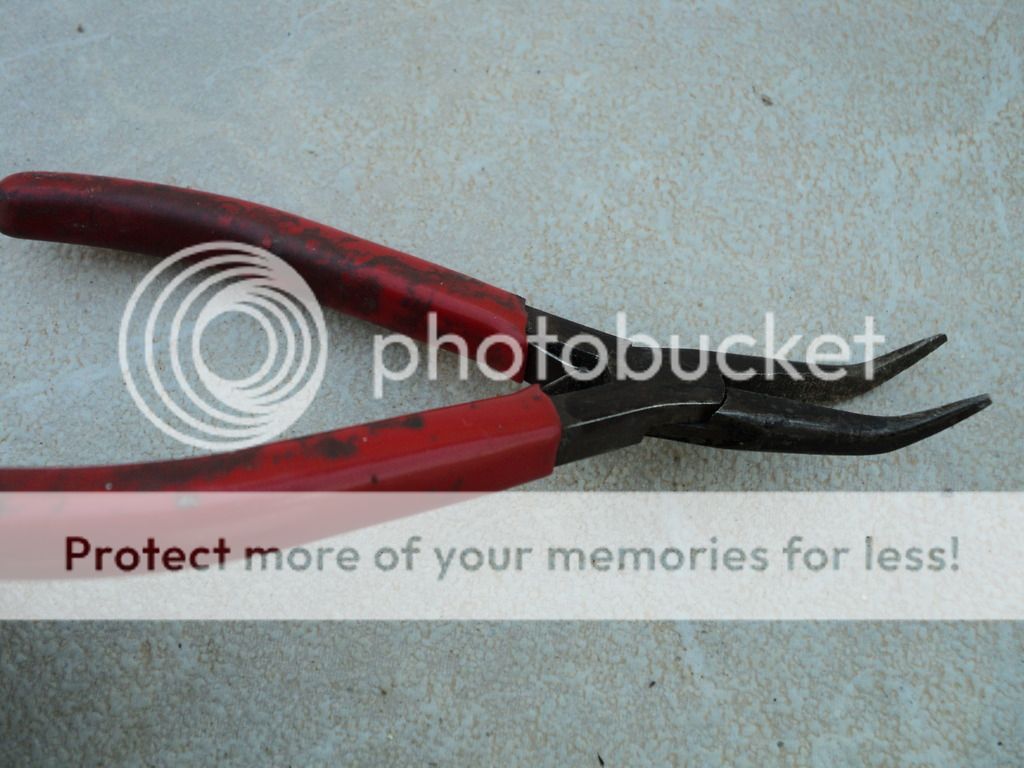The second one finally came in; this time in a proper cardboard shipping box instead of the typical plastic bag.
The second light worked the same as the first but had a couple of minor issues, so I've delegated this into the "Tear-down" light. First, we had a couple of off center emitters, and a broken centering ring (more later  ).
).

Bezel, Thick O-Ring, Thick Glass lens, Thin O-Ring and a flimsy spring clip (not sure of it's purpose, it fits around the pill, but there isn't anything for it to seat against when the pill is installed on the light):

The beveled glass lens IS THICK! It measure 5+mm by ~38mm dia.

After removing the bezel, O-rings, lens, etc, I find a pill that has been roughly chiseled down to align within the body:

Here's a closeup of the driver; there's a couple of ICs and what appears to be a diode under the coil. I see the two parallel R150 resistors; is this thing resistor modable?

Inside the pill: it's a decent thick-walled aluminum drop-in design. There is some contact to the body at the base, where it rests against the flat edges. Some thermal compound may help heat transfer here. There is a minimal gap between the sides of the pill and the sides of the body; When I re-assemble the light, I'll be using some aluminum strips to fill the gap, which should help heat-sinking a lot. You could fill it with a silicone adhesive, JB Weld, or other compound, which should help, but that would prevent future disassembly.

Remember the broken centering ring? Well, here's the reason: They have been cut from the factory to allow clearance for the wires! I definitely feel for the sweat shop working who is cutting those rings and hand-fitting each one on the assembly line.
I also notice that the emitters are wired in parallel. The PCB is a 29mm aluminum board; I don't think I'll have much success finding an aftermarket XP-sized replacement, allowing me to use this for the UV triple host as I had intended. I think I have several small-diameter XP-sized PCBs I had ordered from FastTech though; Maybe I could fit three onto the pill with minimal fuss.

Under the PCB, an insufficient glob of cheap white CPU Heat Sink compound. Also, there's a burr or other unevenness to the surface, so the board isn't sitting quite level to make good thermal contact.

It's fairly cheaply made on the inside, but there may be some potential. My two big questions are:
- Can this be resistor modded (after improving the host/pill thermal connection) to boost output?
- Are there aftermarket triple emitter PCBs in this size to allow emitter replacements?
![]() But, if keltex78 doesn’t get his apart soon, and wants me to share pics, I’ll do that. I know we all like pics, but if anyone joins this thread late, it will be easier for them to find pics in the OP than to have to scroll through to find them in here. That’s the way I think, anyway. I guess I could be wrong.
But, if keltex78 doesn’t get his apart soon, and wants me to share pics, I’ll do that. I know we all like pics, but if anyone joins this thread late, it will be easier for them to find pics in the OP than to have to scroll through to find them in here. That’s the way I think, anyway. I guess I could be wrong. ).
).








